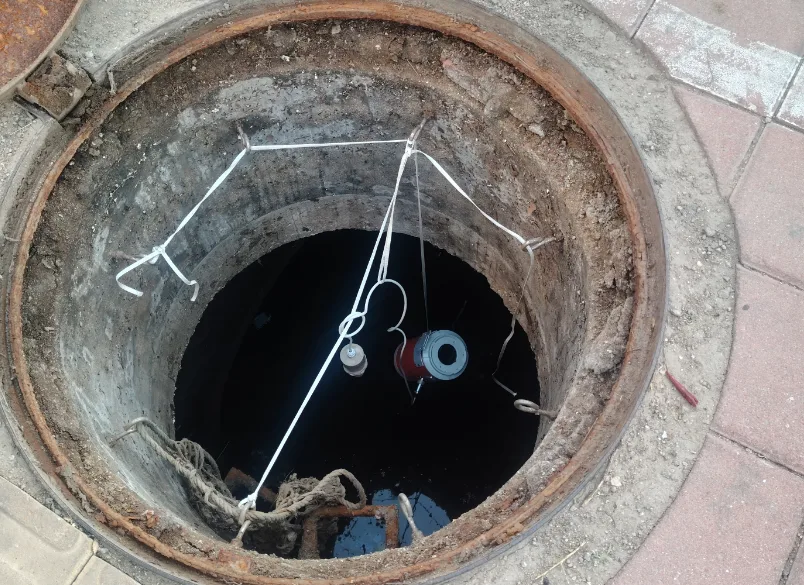키워드 : 초음파 수치 측정기, 도시 하수 관리, 액체 수치 모니터링, 스마트 시티, 하수 넘치는 예방, 접촉 없이 측정 IoT 폐수에서
배경: 노후화된 도시 하수 시스템에서의 도전 2등급 도시의 오래된 도시 지역에서는 지하 하수망이 복잡하고 노후화되어 폐수 양이 증가함에 따라 점점 더 큰 문제로 직면했습니다.하수 우물 수치가 급격히 상승했습니다., 환경 오염, 일상 생활의 방해, 보행자와 차량에 대한 안전 위험을 초래하는 빈번한 홍수가 발생했습니다.시의 관리 부서는 긴급히실시간 액정수준 모니터링 과잉 사고를 능동적으로 방지하기 위해서입니다.
초음파 수준 측정기 는 왜 필요 합니까? 비교 분석 여러 기술 을 평가 한 후, 초음파 레벨 미터는 그 고유 한 장점 을 위해 선택 되었다. 아래 는 다른 일반적인 레벨 미터 와 비교:
특징 초음파 레벨 미터 접촉 레벨 미터 레이더 레벨 미터
측정 방법 비 접촉 (폐기물과 직접 접촉하지 않습니다)
접촉 (부식/물착에 취약)
비접촉
환경적 적응력 부식, 잔해 및 물 흐름 변동에 저항력
하수 접촉으로 인한 높은 유지 관리
좋지만 더 비싸지
설치 복잡성 단순 (올라기/옆에 장착, 파이프 라인 수정 필요 없다)
자주 정렬 및 청소가 필요합니다.
중간 복잡성
데이터 정확성 높은 (±0.2%에서 ±1%의 오류율)
잔해 축적으로 인한 오류가 발생할 수 있습니다.
높지만 증기로 영향을 받습니다.
사물인터넷과의 통합 원활함 (GPRS/LoRa 전송을 지원)
제한된 통합 능력
호환되지만 비용이 많이 든다
주요 이점 :
비접촉 설계 부식 및 막힘 문제를 제거하여 유지보수를 75% 줄입니다.넓은 측정 범위 (0.2~30m) 는 다양한 우물 깊이에 적합합니다.간섭 방지 능력 불안한 물과 공기의 혼란에서 안정적인 데이터를 보장합니다.쉽게 통합 기존의 원격 모니터링 자동화 시스템과 함께
구현: 설치부터 시스템 통합
1모니터링 포인트 선택 50개의 대표적인 하수도 우물이 선택되었으며, 다음을 중점적으로 조사했습니다.
홍수 위험 지역
낮은 지역
주거/상업 중심지 근처의 중요한 위치
2설치 과정
상단 장착 :
센서와 액체 표면을 수직적으로 정렬하기 위해 펌프 구멍 덮개에 구멍이 뚫립니다.
물 막아주는 브래킷을 설치해서
인근 통신 기지 (GPRS/LoRa 모듈) 에 연결된 방수 전력 케이블과 신호 라인
3지원 인프라
데이터 획득 시스템 :
로컬 데이터 로거는 실시간으로 액체 수치를 수집하고 5분마다 도시의 모니터링 센터에 전송했습니다.
경보 시스템 :
자동 경고 (SMS/e-mail) 는 미리 설정된 기준을 초과할 때 발사되며 경고의 정확도는 95%입니다.
모니터링 소프트웨어 :
데스크톱/모바일 기기를 통해 실시간 대시보드와 역사적인 트렌드 분석
결과: 하수도 관리의 전환
1실시간 모니터링 및 조기 경고
24/7 지속적인 모니터링 5분 단위로 데이터 업데이트를 합니다.30번의 성공적인 사전 경고 한 해 동안의 홍수 위험성, 중대 비가 올 때 1시간의 조기 경보로 배수팀이 적시에 배치되어 큰 홍수가 발생하지 않도록 하는 경우를 포함합니다.
2최적화 된 배수 작업
배수 효율성 25% 향상 데이터에 기반한 펌프 조정 (예를 들어, 비가 올 때 하류 지역의 펌프 용량을 증가시키는 것)문제 구역의 연간 홍수 발생률이 10+에서 <2로 감소합니다.
3비용 절감
연간 유지보수 비용의 75% 감소 : 우물당 ¥2,000에서 ¥500, 50개의 우물에서 연간 ¥75,000을 절약할 수 있습니다.데이터 기반 유지보수 스케줄링을 통해 불필요한 청소와 수리를 줄입니다.
배운 교훈 과 미래 전망
주요 내용 :
지역 특유의 설계 : 철저한 설치 전 조사는 최적의 센서 배치와 데이터 정확성을 보장합니다.신뢰할 수 있는 장비 : 고품질의 초음파 계측기를 우선시하고 강력한 반 간섭 기능을 갖습니다.데이터 기반 의사결정 : 유체 수준 데이터를 주도적 관리를 위해 도시 배수 모델과 통합합니다.지속적인 유지 : 정기적인 캘리브레이션과 시스템 업데이트는 장기적인 신뢰성을 보장합니다.
미래 가능성 :스마트 시티
결론: 이 사례 연구는 초음파 레벨 미터가 도시 하수 수액 수치를 위해 견고하고 비용 효율적인 솔루션을 제공하는 방법을 보여줍니다.감시 이 기술은 실시간 인사이트와 능동적인 대응을 가능하게 함으로써 더 똑똑하고 더 안전하고,그리고 더 지속가능한 도시 인프라.
초음파 레벨 미터 솔루션 또는 스마트 하수 관리에 대한 문의카시스

 귀하의 메시지는 20-3,000 자 사이 여야합니다!
귀하의 메시지는 20-3,000 자 사이 여야합니다! 이메일을 확인하십시오!
이메일을 확인하십시오!  귀하의 메시지는 20-3,000 자 사이 여야합니다!
귀하의 메시지는 20-3,000 자 사이 여야합니다! 이메일을 확인하십시오!
이메일을 확인하십시오! 


